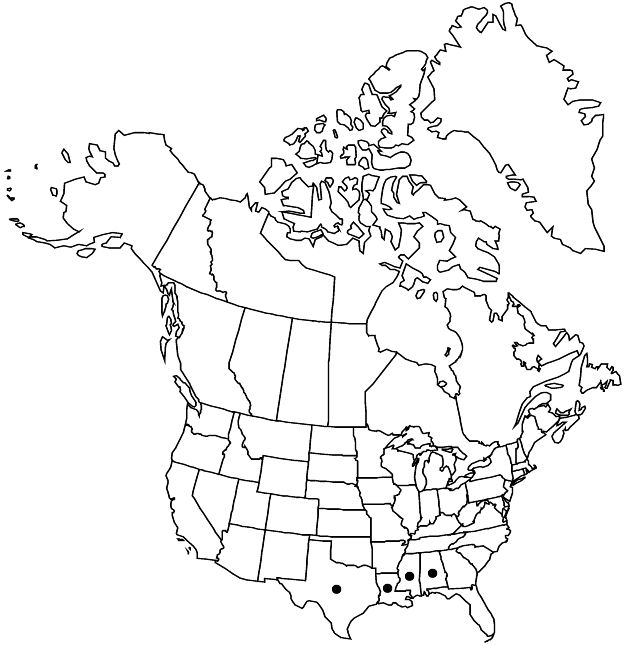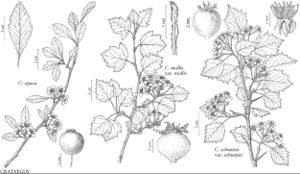Crataegus opaca
Compan. Bot. Mag. 1: 25. 1835.
Trees, 80+ dm. Stems: trunks 0.3 m diam.; twigs: new growth rufous-tomentose, 1-year old medium to dark gray; thorns on twigs 2-years old dark gray to black, 2–4 cm. Leaves: petiole 4–7 mm, length 10–15% blade, short rufous-tomentose; blade ± elliptic to lance-elliptic, sometimes broadly elliptic, 5–7 cm, lobes 0 or sinuate (sometimes more deeply and irregularly lobed on vegetative shoots, then lobes often wider), margins entire or obscurely or shallowly crenate distally, teeth gland-dotted, veins 5–9 (or 10) per side, apex subacute to acute, abaxial surface rufous-tomentose, especially along veins, sometimes glabrescent, adaxial usually dull, scabrous, especially young. Inflorescences ± sessile or in 3–6-flowered umbels; branches absent or short, glabrous; bracteoles few, oblong-linear, margins glandular. Flowers precocious, 12.5–17.5 mm diam.; hypanthium glabrous; sepals 4 mm, margins entire or slightly glandular-serrate; petals white to sometimes pale-pink, 7 mm; anthers reddish or rose, 1 mm; styles 4 or 5. Pomes red, sometimes yellow, (8–) 12–15 mm diam.; pyrenes 4 or 5.2n = 34.
Phenology: Flowering Feb–Mar; fruiting May–Jun.
Habitat: Seasonally inundated depressions, ditches, sink holes, relict interdune swales, streamsides
Elevation: 10–100 m
Distribution

Ala., La., Miss., Tex.
Discussion
Crataegus opaca occurs from eastern Texas to Alabama, is most common in Louisiana, and is apparently rare east of the Pearl River, Mississippi. The fruit is edible and used locally for conserves.
Selected References
None.
Lower Taxa
"thin" is not a number."short" is not a number."adnate" is not a number."dm" is not declared as a valid unit of measurement for this property.
